As temperatures begin to warm, it’s time to be thinking about morel mushroom hunting. With onX Hunt, you can create your own morel mushroom map and mark spots near you that are likely to hold morels. Then you’ll be the first to fill your mushroom sacks in the field.
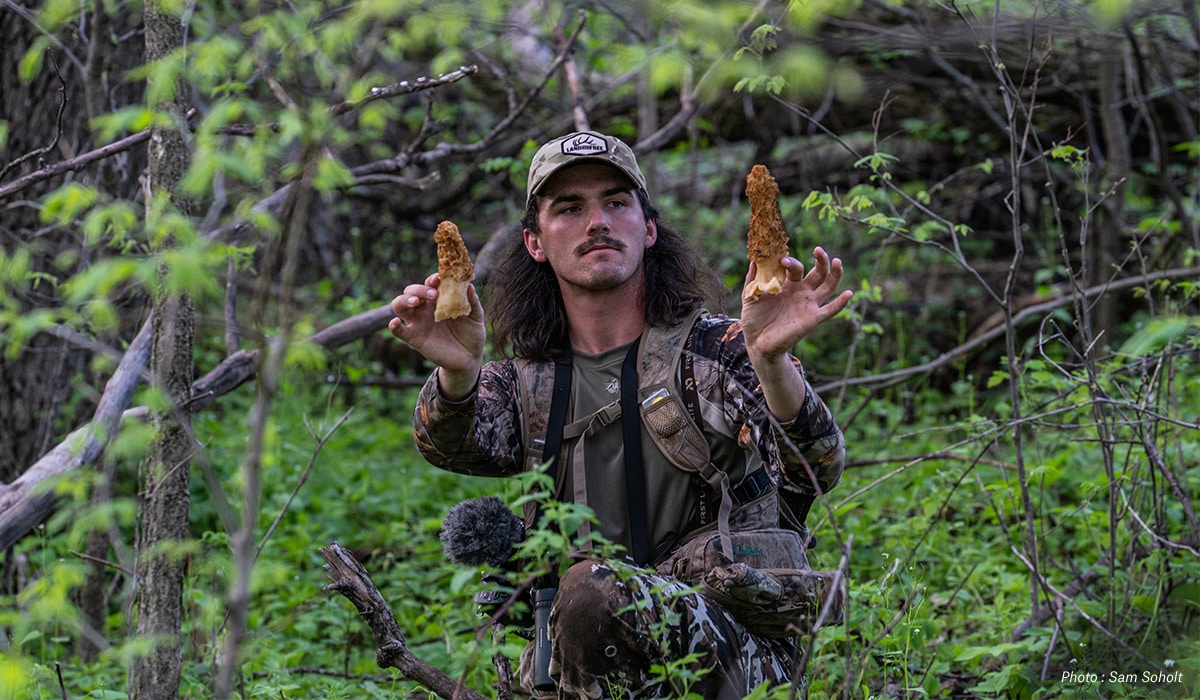
What Are Morel Mushrooms?
Morels are mushrooms that belong to the genus Morchella and are prized by chefs and gourmands around the world. With their nutty, earthy flavor and almost meaty texture, they can stand alone in a dish or accompany hearty proteins like wild game and steak. And while morels can be obtained commercially, the best way to score a haul is to take to the woods and find them yourself.
Growth and Soil Type
Morels can be tricky to find because they so often blend in with the surrounding vegetation and soils. They tend to prefer loamy soils often found near creek beds and river bottoms and the disturbed landscapes found near old burns and logging projects. When conditions are right, there may only be a few days between the morels being large enough to pick and past their prime, so checking a spot only once in the spring isn’t likely to work out.
Common Topography
Early in the season, concentrate your searches on south-facing slopes that receive the most sunlight. These areas will be the first to hit the minimum temperatures for morels to grow. As the spring progresses, widen your search area to include likely habitat on north-facing slopes as well. Also, make sure you don’t ignore river bottoms and forest edges.
Burn Areas
One of the most likely areas in which to find morels is burn areas. Ideally, you’ll have identified sections of forest that experienced fires of moderate intensity during the previous summer. Use onX Hunt’s Historic Wildfire Layer to identify past burns—these areas are never a bad place to begin your search.
Trees Worth Identifying
Another common strategy is to identify particular species of trees near which morels are often found. In the East, these may include elms, ashes, tulip poplars, and old apple orchards. In the West, cottonwoods in river bottoms and aspen stands are good places to start your search. Use onX Hunt’s Tree Species Data Layer to e-scout from above.
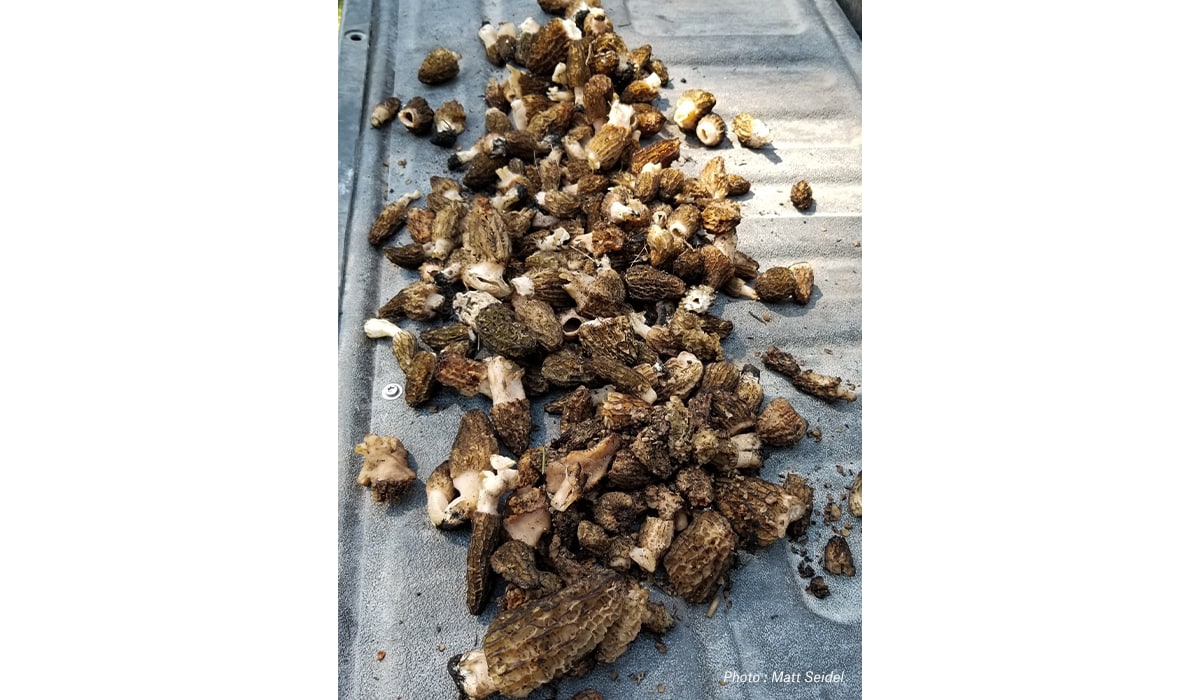
When Is Morel Mushroom Season?
Broadly speaking, morels can be found from late March through June. The most likely dates for a particular area depend on the region of the country and how quickly the spring sun begins to warm the soil. Simply put, the sooner things warm up, the sooner morels will begin to emerge. A general rule is to wait until soil temperatures reach approximately 50 degrees Fahrenheit.
Morel Progression Map
As the morel mushroom season unfolds, morels progress most commonly by altitude, but also by ground conditions (such as wildfires from the previous year. Early season morels come up at lower altitudes, along river bottoms, and as the season progresses they begin popping at higher altitudes. Remember, morels grow when ground temps are between 45 – 50 degrees Fahrenheit.
You can build your own morel progression map using onX in part by marking Waypoints in areas where you found them in the previous season, noting the elevation and the date you found them. You can also build a progression map by looking at historic wildfires in onX Hunt, as shown below.
A Note About Poisonous Morel Mushroom Look-Alikes
It is important to make sure the morels you’re picking are, in fact, actually morels. A number of similar-looking “false morels” can often be found in the same type of habitat, and some of them can cause intestinal distress or worse. One common method to identify false morels is by slicing them lengthwise and examining their core. Legitimate morels will have a hollow core, but false morels will be solid all the way through.
Learning the difference between real and false morels is critical, so refer to field guides and other sources before consuming any morels you harvest.
How To Set Up Your onX Hunt App for Morel Hunting
While understanding where morels are likely to be found is critically important, utilizing the tools provided by onX Hunt can give you an edge as you begin your search. Note that the screenshots shown below are to be used for reference only—there’s no guarantee that you’ll find morels in the areas shown.
Using the onX Hunt iOS or Android Mobile App
Step 1: Click the link below to create an account and begin your free 7-day trial. Enter a valid email address and password, then select ‘Start Your Free Trial.’ After successfully creating an account, select the state in which you intend to hunt morels.
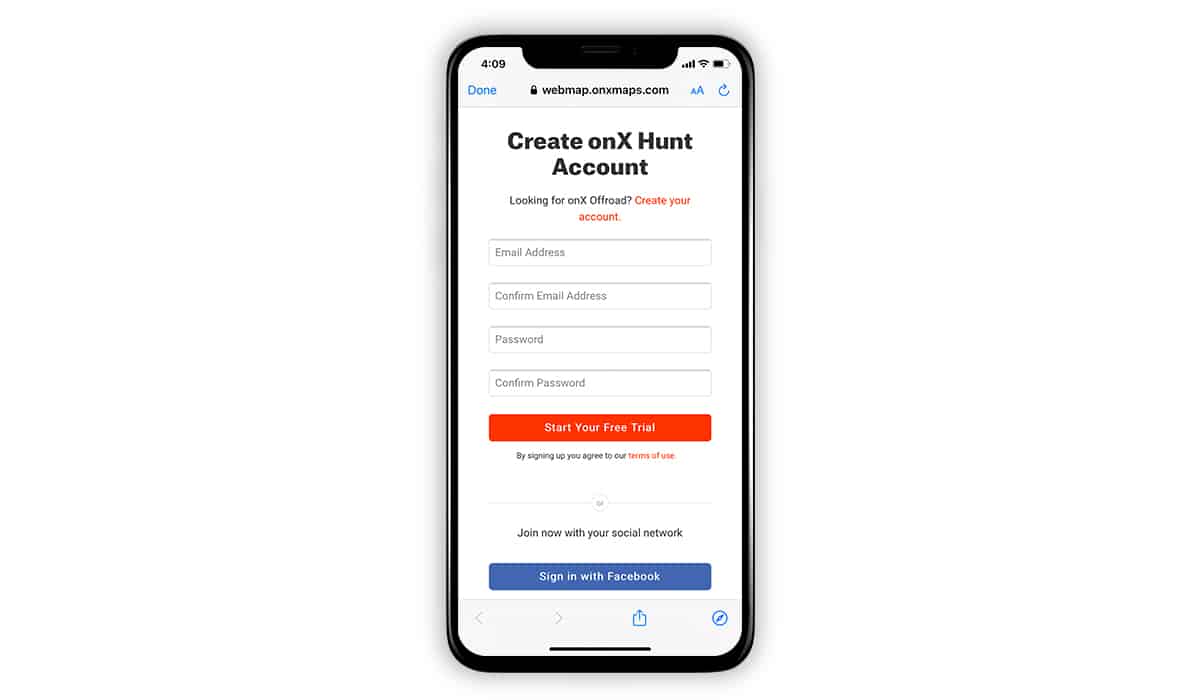
Step 2: After creating an account you’ll be prompted to download the onX Hunt App from either the Apple App Store or Google Play Store. Go ahead and download the onX Hunt App. If not prompted after creating an account, searching ‘onX Hunt’ in either app store will work too.
Step 3: Once you’ve downloaded the Hunt App, log in with the email address and password you used to create your account.
Step 4: Turn on public and private land boundaries by tapping on the ‘Map Layers’ button, selecting your state, and turning on the state’s Private Lands and Gov Lands Layers.
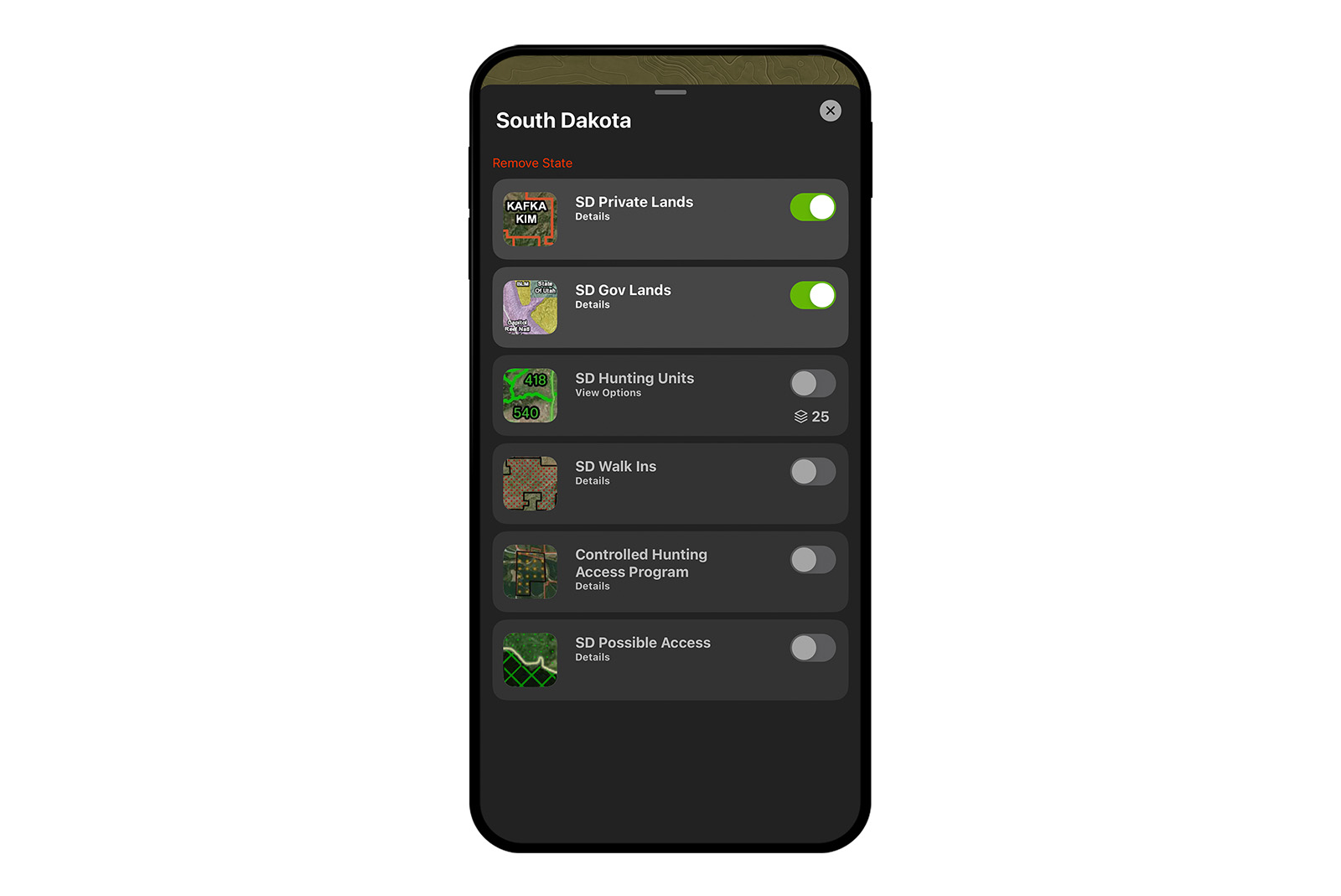
Step 5: This is a big one. Turn on the Historic Wildfire Map Layer—this is the starting point for many successful morel hunters. To turn on this Map Layer, tap ‘Hunt Map Layers’ from the main screen, tap ‘Trees, Crops, & Soil’, and tap ‘Historic Wildfire’ to turn the Map Layer on. Once you return to your map, you’ll be able to see where wildfires have occurred, how intense they were, and the year in which the land burned.
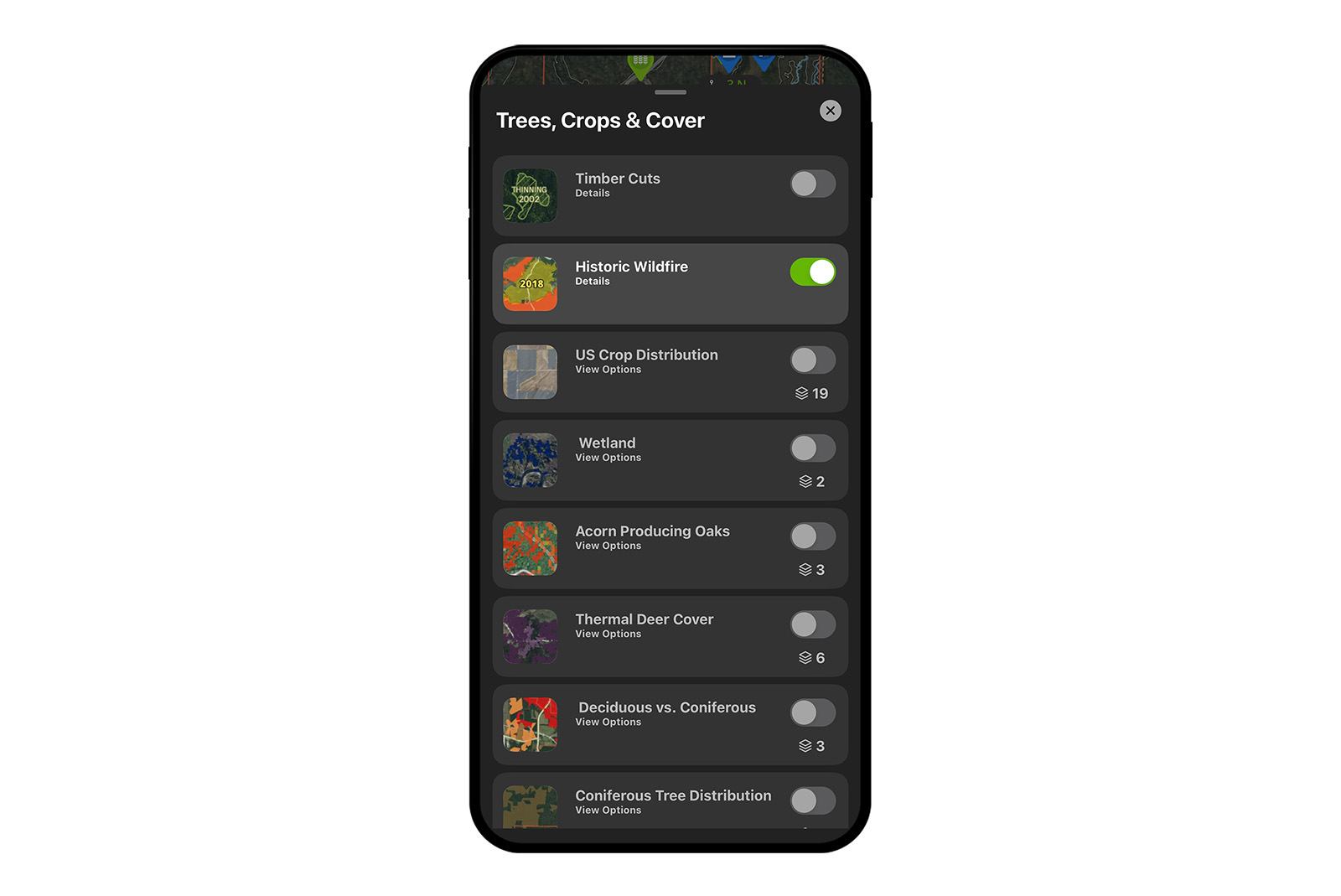
At this point, you’re set up for e-scouting morel locations. Find the areas you want to check out and easily determine if they are on public or private land. Alternate the Basemap between Satellite and Topography to get the lay of the land, or use the Hybrid Basemap to combine both options. Then, zoom in on the areas that look promising to see them in more detail.
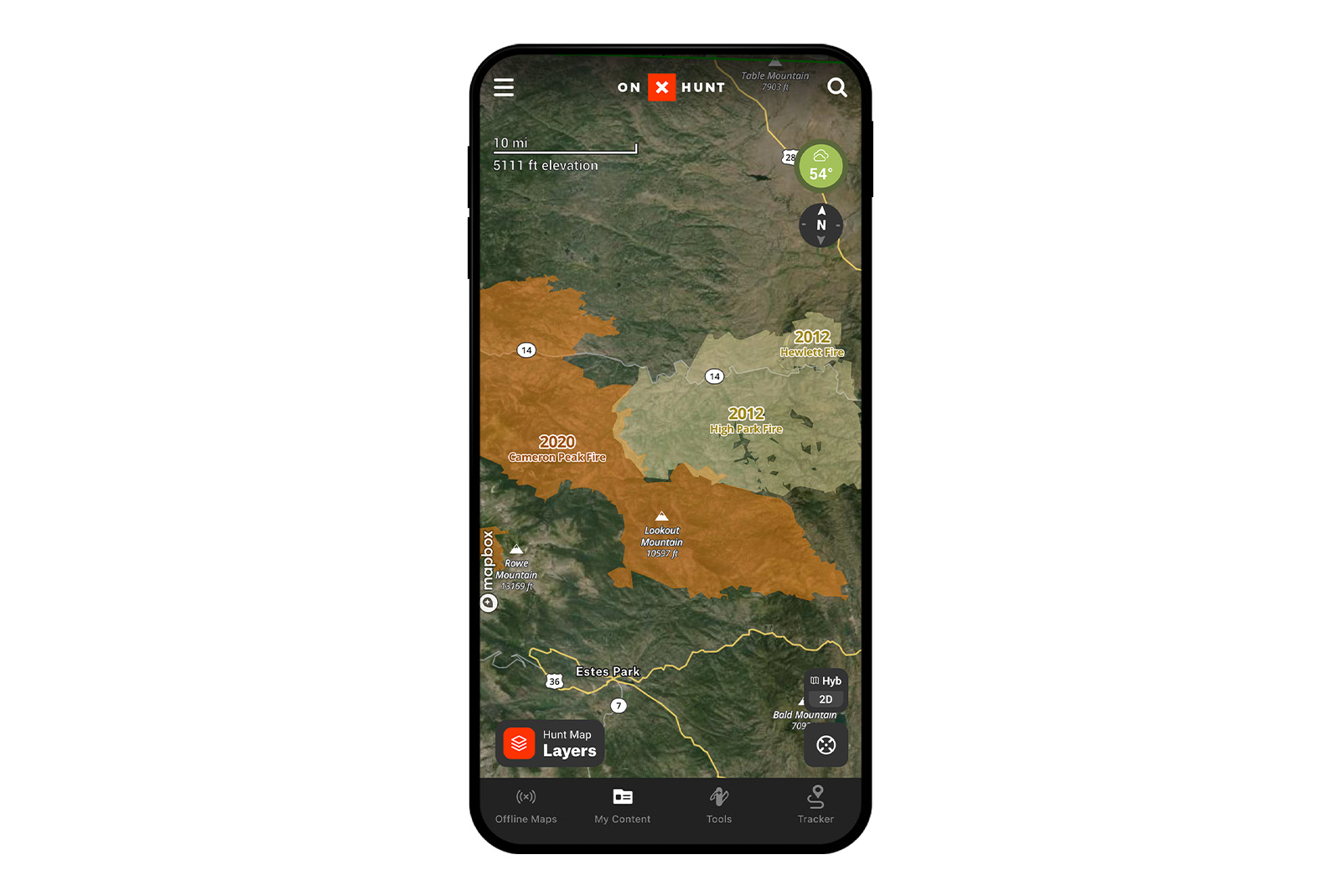
Mark locations of interest with custom Waypoints. You can even change the Waypoint icon to a mushroom to distinguish your spots from locations you’ve marked for other reasons. Stay safe in the backcountry by sharing your Waypoints and other Markups with your favorite morel hunting partner.
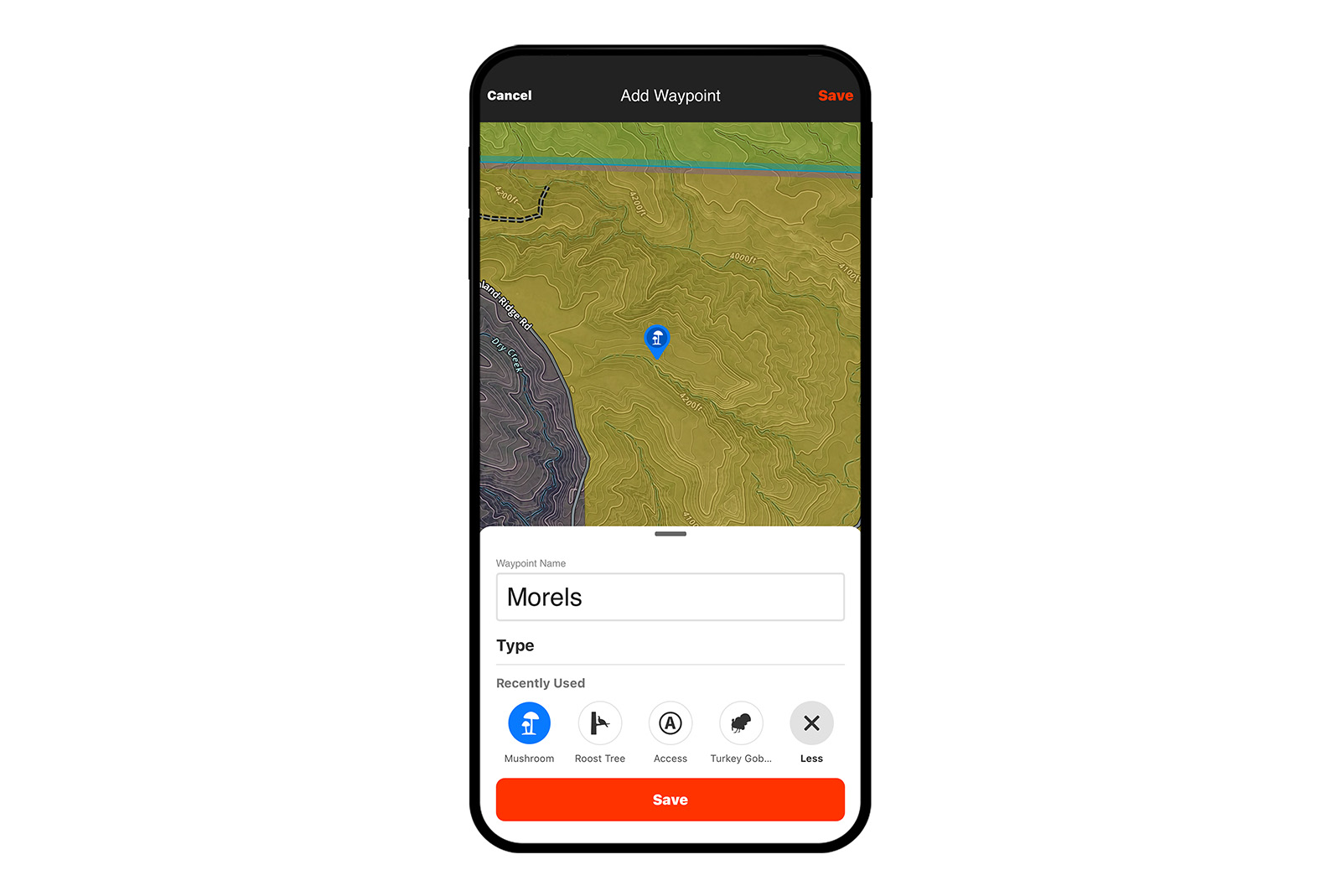
Download Before You Go
Conserve your smartphone’s battery life and leave nothing to chance by downloading Offline Maps for use when cell service is not available. Tap the ‘Offline Maps’ button, tap ‘New Map,’ move your map to the area you want to save, tap ‘Next,’ choose your desired level of map detail, and tap ‘Save’ to download your Offline Map. Remember that your position on the map will always be represented by a blue dot—even when you’re in Offline Mode.
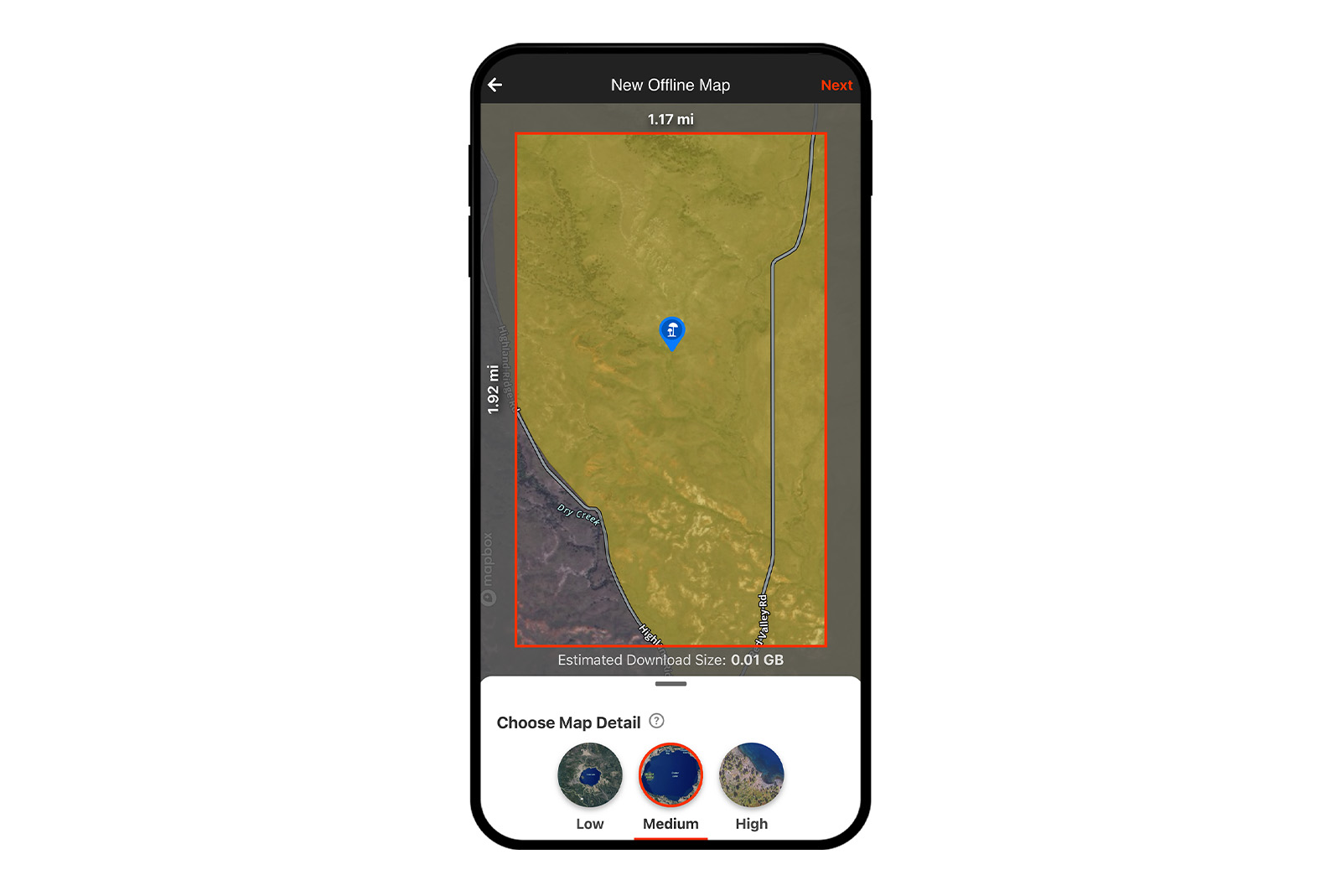
Using onX Hunt in the Field
Before you take to the woods, make sure you’ve checked the weather and determined if morels are likely to be growing. Also, confirm that you’ve downloaded Offline Maps of the area. When you arrive, set a Waypoint where you park so you can find your way back. Additionally, use the Tracking feature to plot your course as you move—this is especially helpful if you realize you’ve lost something along the way. Add Waypoints as you go to remember particular locations, and attach pictures to your Waypoints so you remember why you set the Waypoint in the first place. And remember to switch over to Offline Mode when your cell service starts to fail.
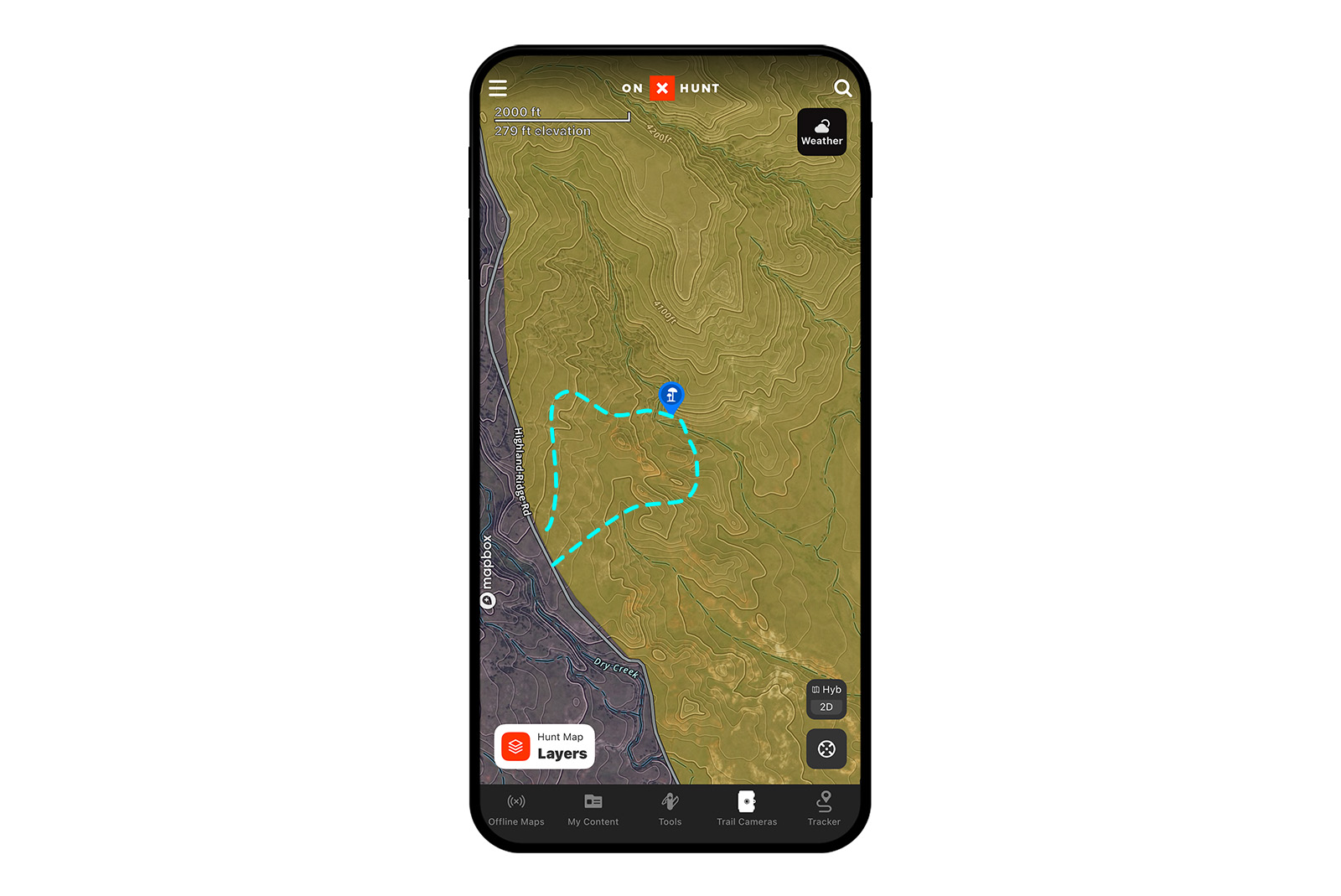
How To Conserve Smartphone Battery Life While Using onX Hunt
onX Founder Eric Siegfried used the onX Hunt App on a 10-day hunting trip in Alaska—find out how he did it. Also, learn some additional tips on saving battery life while using the onX Hunt App.
E-Scouting Using Web Map
During your e-scouting and planning phases, consider using the desktop version of onX Hunt, the Web Map, to take advantage of a larger screen and all the features discussed above. Open any web browser, head to the onX Hunt website, and select ‘Log In’ in the upper-right corner.
Once you’ve logged into the Web Map, turn on public and private land boundaries as well as the Historic Wildfires Later. Mark locations using Waypoints—they’ll sync seamlessly to a mobile device logged into the onX Hunt App under the same account.
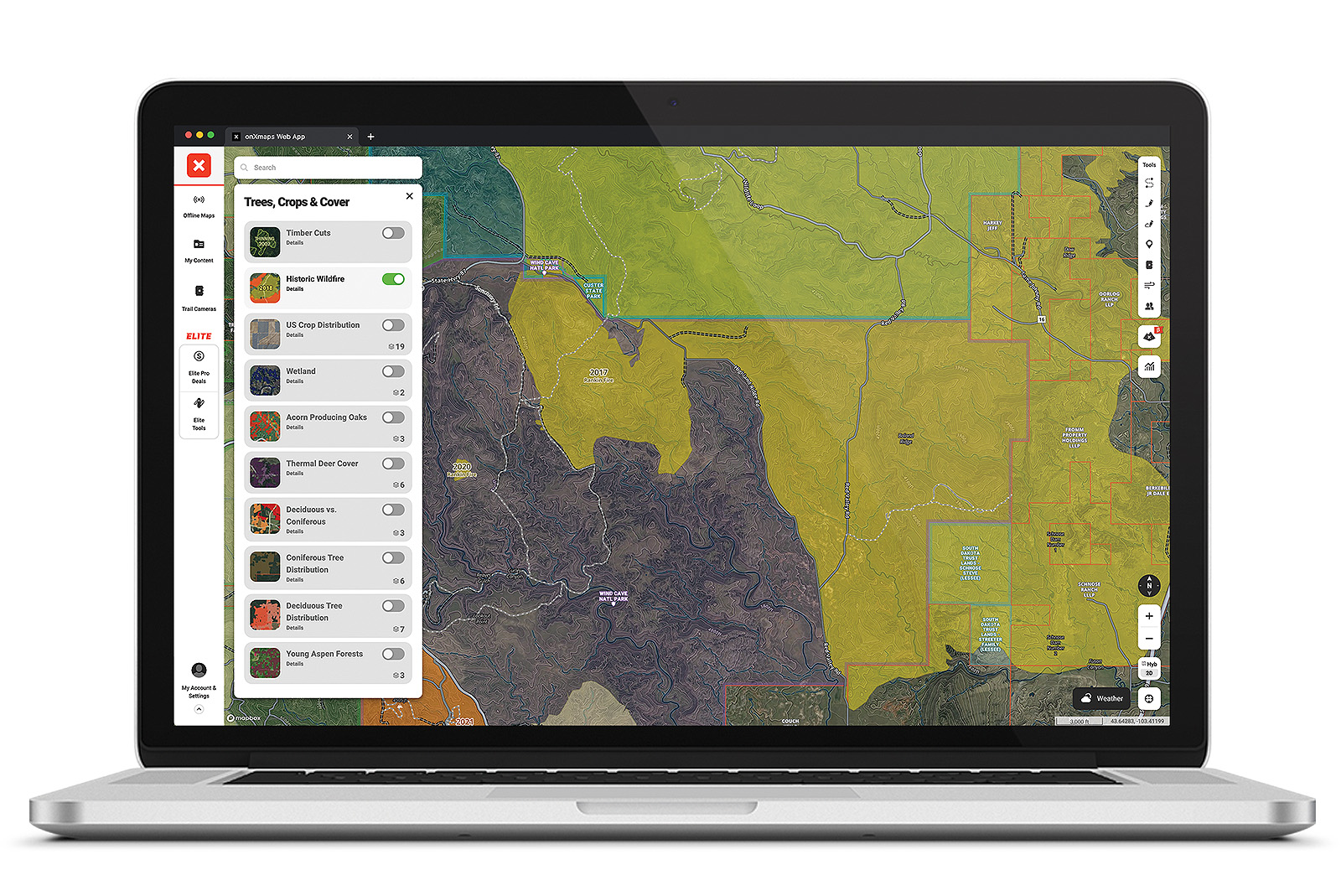
Additional onX Hunt App Features for Morel Mushroom Hunters
Markups (Waypoints, Lines, and Shapes)
Trails, Trail Slope, and Trail Mileage
A Final Note on How To Pick Morel Mushrooms
Coming home with a full sack of morel mushrooms can be one of the highlights of spring, and the feeling of satisfaction that comes with finding a patch of woods full of morels is hard to beat. Check the regulations in your area to make sure you’re on the right side of the law, learn to distinguish between real and false morels, and plan ahead to make sure you’re concentrating your search in the right spots. Good luck on your hunt.
References
MeatEater – The Total Guide to Morel Mushroom Hunting
MeatEater – Regional Strategies for Morel Mushroom Hunting
Practical Self Reliance – Morel Mushrooms: How to Find and Identify Morels
Field & Stream – How to Find Morel Mushrooms This Turkey Season
Outdoor Life – 12 Tips for Finding More Morel Mushrooms This Spring